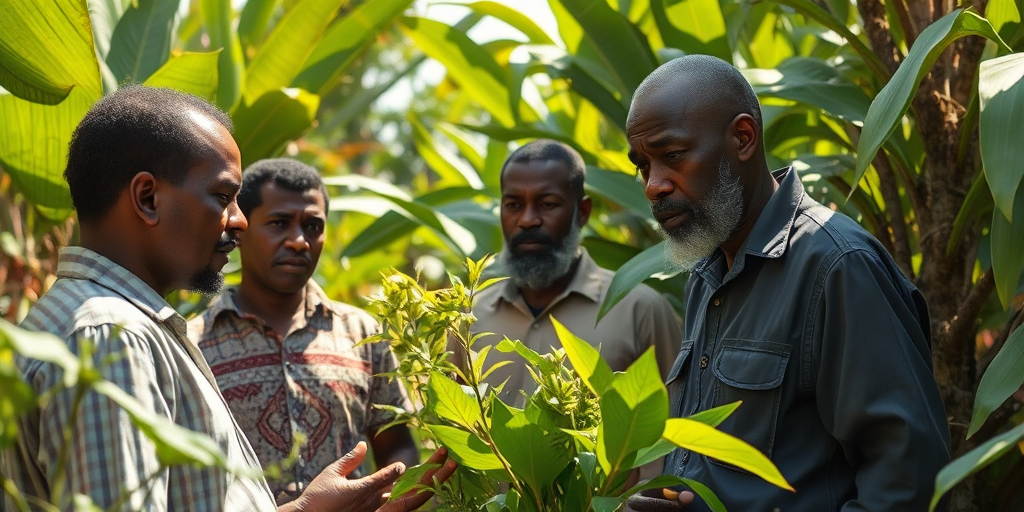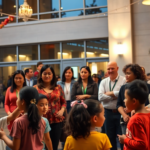Invasive Senna didymobotrya Threatens Plant Diversity in Oromia
In the heart of Southeastern Oromia, Ethiopia, the ecological balance is facing a new threat from the invasive species Senna didymobotrya, commonly known as the black-eyed Susan. Emerging research has unveiled the profound impact of this invasive plant on local ecosystems, raising urgent concerns and calls for immediate intervention. This development not only affects the plant diversity in Oromia but also highlights a growing global issue of managing invasive species amid climate change and increased trade.
Unveiling the Ecological Disruption
Research spearheaded by Osman and Telila has meticulously documented the disruptive presence of Senna didymobotrya in Oromia’s ecosystems. Utilizing a combination of field data and controlled studies, the researchers revealed how this plant is swiftly overtaking native species, significantly diminishing plant diversity. The invasive species shows remarkable adaptability, allowing it to thrive across varied environmental conditions and outcompete indigenous flora.
This unchecked spread poses significant threats not only to the ecological networks that underpin these environments but also to local agriculture. The invasive plant competes fiercely for vital resources such as water and nutrients, directly threatening crop yields and, consequently, the livelihoods dependent on them.
Soil Chemistry and Nutrient Dynamics
One of the more concerning findings relates to the invasive plant’s influence on soil chemistry. Senna didymobotrya has been linked to reductions in essential soil nutrients, particularly nitrogen and phosphorus. These nutrients are crucial for supporting diverse plant communities, and their depletion could lead to long-term ecological imbalance. As the species alters soil properties, it further hampers the growth of native plants, creating a feedback loop of declining biodiversity.
“The presence of Senna didymobotrya is not merely a botanical concern; it’s an ecological catastrophe waiting to unfold,” Osman noted. “Without strategic interventions, the implications for our native ecosystems and agricultural foundations are dire.”
Community and Economic Impacts
For the communities spread across Southeastern Oromia, this poses an alarming economic threat. As farmers struggle with declining crop yields due to escalating competition from the invasive plant, food security becomes increasingly precarious. The economic ramifications could ripple through the local economy, affecting food prices and employment within the agricultural sector, which is a cornerstone of the region’s economy.
“This invasive species crisis is not just an environmental issue—it’s a threat to our way of life,” commented local community leader Ayele Mekonen. “We need state support and global awareness to tackle this challenge head-on.”
Pathways to Resilience
In response to these findings, Osman and Telila recommend a suite of management strategies to curb the spread of Senna didymobotrya. Key among these are monitoring initiatives to track the plant’s proliferation and the deployment of rapid-response teams for early remediation efforts. Biological control methods, involving the introduction of natural predators or pathogens specific to Senna didymobotrya, are also under consideration as potential long-term solutions.
Equally important is community involvement in combating invasive species. Empowering local populations through education and participatory conservation activities can augment official efforts, making them more effective and sustainable. This community-driven approach is crucial, as local residents are often the first to observe changes in the landscape and can act as frontline defenders of their environments.
“Mobilizing our community is essential,” remarked Helen Getachew, a biology teacher actively involved in local conservation efforts. “Everyone has a role to play, and knowledge is our best tool against this growing threat.”
Lessons for a Global Challenge
While Senna didymobotrya presents an immediate risk to Oromia, it also serves as a precursor to potential global challenges. The spread of invasive species is an increasingly pressing issue, exacerbated by factors such as global trade and climate fluctuation. The principles and practices developed through this research could hence inform international conservation strategies, fostering resilience in diverse ecosystems worldwide.
As Osman and Telila stress, “Our fight against Senna didymobotrya is not only about Oromia; it is a part of a larger narrative on preserving biodiversity globally.”
A Call to Action
Ultimately, the study underscores an urgent call to action to protect Oromia’s plant diversity before it’s irreversibly altered. The lessons learned from Southeastern Oromia’s crisis offer a unique opportunity to enhance our scientific understanding and preparedness against invasive species. Through collaborative efforts, there is hope to restore balance to these ecosystems and support sustainable development in the region.
For Oromia’s residents, understanding and combating Senna didymobotrya’s impact is a critical step in maintaining their heritage, livelihoods, and the ecological well-being of their homeland. As Osman and Telila’s research concludes, the path forward demands not only scientific insight and strategic planning but also collective will and action to preserve the planet’s natural beauty for generations to come.
For further information or interested parties looking to engage with local conservation efforts, regional government offices in Oromia can be contacted, as well as several non-profit organizations focused on environmental protection. Awareness campaigns and educational forums are also planned to ensure widespread community involvement in addressing this critical issue.







